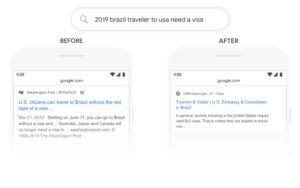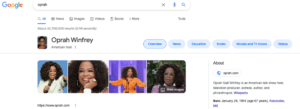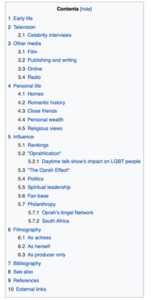MUM: The Next Evolution of Google Search
Every few years, Google releases a new search algorithm to help keep up with the inquiries and demands of modern technology and today’s web user. For the last several years, Google’s search algorithm was BERT. However, BERT’s replacement, Multitask Unified Model (MUM), has arrived. Join us as we break down some of the key differences between BERT and MUM as well as highlight some of MUM’s major strengths in adapting to a modern search experience.
Goodbye to BERT
Before we can jump into how MUM will evolve the modern search experience, it’s only fair to say farewell to MUM’s predecessor BERT. Implemented in late 2019, the Bidirectional Encoder Representations for Transformers (BERT) was Google’s first major step into helping search algorithms understand the intent behind search inquiries.
BERT enabled Google’s algorithms to better understand the nuances and context of works in a search inquiry instead of viewing search inquiries in a vacuum. This helped better match web users with the results that they were looking for on Google! In addition, BERT enhanced the overall quality of featured snippets that we served to users based on their searches.
This difference can prove a bit difficult to explain. So, to help we’ve borrowed an example from Google’s blog announcing BERT.

1: Image courtesy of Google
In this example, we can see the difference pre- and post-BERT regarding an inquiry about traveling to the United States from Brazil. The important distinction is that before BERT, Google’s algorithms didn’t grasp the importance of the common word ‘to’ in this context. Post-BERT the algorithms were able to more fully understand the nuances of the inquiry to notice the importance of ‘to’, thus providing more accurate answers.
Now, our brief refresher on BERT is to set up for the next evolution, MUM.
Hello MUM
As mentioned prior, MUM stands for Multitask Unified Model and is the next evolution of the search algorithm. It is going to build on top of BERT’s growth and progress towards Google’s ultimate goal of providing relevant, timely information to answer users’ queries in an efficient manner.
How is MUM Different?
Google’s BERT update was the first instance of Google signaling a transition from being focused on solely traditional keyword-based searches to a focus on more complex inquiries. That is, to say, a focus on better understanding how humans actually talk.
BERT enabled Google to provide a wider range of more accurate information be displayed to users not only in search results but on the search engine results page (SERP) itself.
BERT was impressive but MUM is, according to Google, “1000 times more powerful”. While it also has overall improvements to efficiency and is a more powerful tool, the main benefits of MUM can be summed up into 3 main categories:
Multimodal
Multimodality means that Google’s algorithm will have the capability to understand more than just text-based content, as it did previously. MUM will be able to parse through images, videos, and other forms of audio content. This means that we may begin seeing results appear on the SERP beyond just text results.
Complex Search Queries
MUM will have an improved capability to understand the nuance and importance behind long-form questions which previous iterations of Google’s algorithm would have failed to comprehend. We discuss this more thoroughly by extrapolating on Google’s example below.
2: Image courtesy of Google
In this example, we’re able to see that the search phrase has quite a few important parts to it. Previous iterations of Google’s search algorithm wouldn’t be up to the task. However, because of the wide resources available to MUM, and its capability to process them, MUM can provide a more useful answer.
In this scenario, MUM would be able to determine that while both mountains are similar in height arrive at Mt. Fuji in the Fall would put the visitor there during the rainy season. In response, MUM may serve results about rain gear while also providing useful subtopics to help in preparation like training exercises or gear recommendations.

Overcome Language Barriers
One of the largest challenges to providing the highest quality results since the creation of search engines was language barriers. However, per Google, MUM should have the capability to overcome language barriers by being able to provide users with translated versions of the web pages that may have more relevant information.
In short, Google will no longer strictly service results from the language in which the query was initially searched in. In a first, MUM is able to discern intent in one language, and the provide the most relevant search regardless of language. For digital marketers, this means that the digital landscape has been broadened beyond language-locked content.
What Does This Mean?
It’s no error to say that MUM is undoubtedly state-of-the-art and very likely the single most powerful search engine to date. After all, Google’s core updates typically tend to be so. In short, MUM is Google’s latest iteration towards meeting their goal of providing accessible, relevant information to their users. And towards that goal, MUM looks to be excelling. The capability to cross languages and forms of content means that, in theory, MUM should provide the best results for any query bar none.
Predictions and Expectations Moving into MUM
How Do We Expect SEO to Change?
Google’s Results Page
Some marketers, like those at SEMrush, anticipate a gradual overhaul of the Google SERP. In fact, they pose that this change will be out of necessity rather than desire. As Google’s algorithms continue to advance with MUM and future iterations, the 10 blue links of Google’s current SERP won’t be sufficient to showcase the depth of information MUM can provide.
They identify one of the signaling issues for this to be that the current SERP doesn’t allow for exploration beyond a single web page. The truth of the matter is that most web denizens aren’t looking for a ‘one and done’ solution to their query online. At a minimum, they’re looking for multiple sources and touchpoints to either build out their understanding of or appropriately address their query.
If we elaborate on this point by comparing the Google SERP for Oprah Winfrey to that of the Wikipedia page for her, we can see that while Google has information provided on the SERP it doesn’t necessarily promote further exploration.


So, some marketers are expecting an update to further encourage exploration on the SERP.
Content Remains King
With the ability to present more relevant, engaging, and exploratory information, MUM once again reinforces the important of content marketing to marketers and business owners alike. Doubling down on this, it now reinforces expanding beyond simple text-based content as valuable information from videos, podcasts, images, or audio files can now be presented on the SERP. A robust, fully thought-out content marketing plan looks to be a cornerstone of helping businesses, websites, and marketers excel on a post-MUM Google.

Proper Optimization
As we’ve discussed in the past, each of Google’s core updates reinforces several key topics, relevancy of content, improved usability of sites, and improved overall website performance. Heading into MUM and beyond, we expect the true ‘cream of the crop’ websites to rise to the top of the SERP and algorithm. To us, this reinforces the importance of proper website care, accessibility, and performance. To this end, there are several metrics important enough to highlight outright as we anticipate their impact to continue to scale.
- Proper Site Care & Maintenance: Websites function just like any other piece of equipment. Over time, small parts begin to wear out, break down, and impact site performance. In the past, companies have been able to partially ignore these issues as long as their site remained largely functional. As technology advances and Google moves toward continuously using site speed and performance as ranking signals, the likelihood of proper website maintenance becoming a necessity is increasing.Curious to see how your website performs with regards to site speed? Check out Google’s PageSpeed Insights tool.
- ADA Accessibility: The need for ADA accessibility has been on the rise in recent years. As the Web Content Accessibility Guidelines (WCAG) continuously evolve, the task of continuously working on improving site accessibility is expected to increase in importance.
In Closing
Google’s MUM update stands to be the most technologically advanced update to the core algorithm to date. And yet, at the same moment, it’s the beginning of a new era of online search. It’s important to make sure that your website, business, and online presence are ready to take full advantage of these developments.
Is your business ready for MUM? How has your marketing strategy been adjusted or prepared for these changes? WSI Smart Marketing is a Santa Rosa-based digital marketing company specializing in lead generation, content marketing, web design, and marketing strategy. Our team strives to be on the forefront of industry updates to help our clients navigate the ever-increasingly complex digital landscape. Reach out to us at (707) 843-3714.


